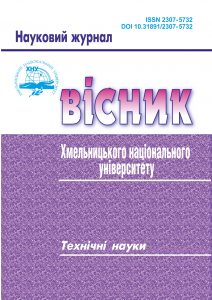A SYSTEM OF ANALOGUES OF MAXWELL'S EQUATIONS FOR ELECTROMAGNETIC AND GRAVITOMAGNETIC FIELDS IN A HETEROGENEOUS TURBULENT DIELECTRIC-DIMAGNETIC MEDIUM OF A CENTRALLY ANTISYMMETRIC COMPLEX SPACE WITH OPEN AND CLOSED SUBSPACES
DOI:
https://doi.org/10.31891/2307-5732-2023-329-6-135-141Keywords:
Maxwell's equation, electromagnetic and gravitomagnetic fields, dielectric-dimagnetic medium, complex space, central antisymmetry, free and bound charges, magnetic monopoleAbstract
Analogs of Maxwell's equations for electromagnetic and gravitomagnetic fields in a non-conducting dielectric-dimagnetic medium of a centrally antisymmetric complex space are formalized. The hydrodynamic-inertial calibration of the field potentials was used, which allowed us to relate the dynamic and energy processes in the general system to the relative motion of open and closed subsystems and their turbulent contact interaction. The transition to the plasma state with the concomitant acquisition of conductivity is carried out due to the triplet violation of the initial antisymmetry and the ternary union of one free and two bound charges in the real and imaginary subsystems of the medium of the complex space. It is shown that the magnetic moments of the existing pseudo-elementary particles, as well as the magnetic fields of the celestial bodies available for observation, are determined by the bound magnetic charges formed in the imaginary subspaces. The futility of a long search for free magnetic charges (magnetic monopoles) in the real subsystem is explained. It is established that the electromagnetic field corresponds to open subspaces of a heterogeneous complex space, while the gravitomagnetic field corresponds to closed ones. This shows the antisymmetry of the two fundamental fields. There is no need for the rest of the artificially introduced fields. It is shown that the real subspaces of a complex space are characterized by expansion processes, while the imaginary subspaces are dominated by collapses. A significantly different type of continuity equations in open and closed subsystems is noted. This makes it impossible to set a priori boundary conditions necessary for solving Maxwell's equations (and analogues), and also determines the non-deterministic development of natural processes in these contactly connected subsystems. The possibility of cyclical changes in the dominant directions of energy transfer (and, accordingly, spiral time) in the structural components of the common space is revealed. It is shown that it is not the charges in the vacuum that are the primary sources of the field (as is usually assumed), but the hydrodynamic motion of the heterogeneous turbulent medium of complex space that forms electric and magnetic charge configurations, which, due to the triplet violation of the initial antisymmetry, become secondary sources of fields. In this process, the effects of hysteresis and nonlocality, as well as the quantum nature of the physical field, should be taken into account.

